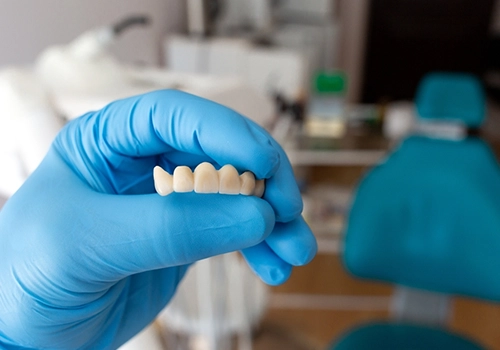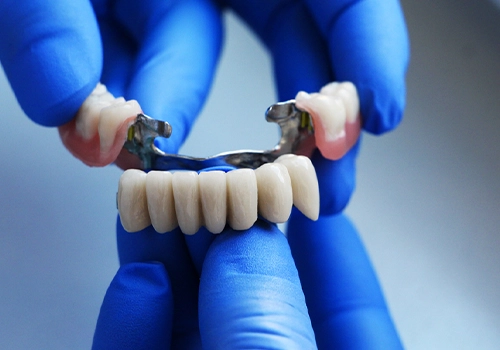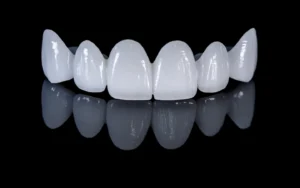The Art of Dental Bridges; Types, Advantages, and Aftercare
In this comprehensive guide, dental bridges—which are necessary to restore smiles’ aesthetic appeal and functionality—are thoroughly examined. The guide covers a wide range of topics, including types, benefits, aftercare procedures, appropriate candidates, possible hazards, and required preparations. It also features Dr. Maadico’s Medical Department in Iran as a reputable organization that provides excellent services in the industry.
Iran‘s strong dentistry scene, marked by innovations and experience, confirms the country’s standing as top locations for high-quality dental care. For those seeking the life-changing advantages of dental bridges, selecting a respected facility such as Dr. Maadico’s Medical Department becomes a calculated choice, guaranteeing skilled accuracy and creativity in the procedure.
Dental Bridges Types
In this part, we shall navigate the intricacies of dental repair by delving into the various types of dental bridges. Through this exploration, we aim to elucidate the methods employed to address the voids resulting from missing teeth
A comprehensive examination of implant-supported, cantilever, conventional, and Maryland-bonded bridges will be conducted, highlighting their subtle differentiations. Embrace an understanding of the rejuvenating potential each bridge type holds, offering a restoration of both form and function, ultimately culminating in a vibrant and wholesome smile.
- Traditional Dental Bridges
The most popular kind of dental bridge is the traditional one, which has one or more pontics artificial teeth anchored by dental crowns on both sides. The natural teeth next to the gap have these crowns attached to them.
- Cantilever Dental Bridges
Similar to conventional bridges, cantilever bridges rely only on one side’s neighboring teeth for support. They are therefore a good choice in situations where there is just one available neighboring tooth.
- Maryland Bonded Bridges
A metal or porcelain framework with wings on either side is used in Maryland bonded bridges. Crowns are not necessary because these wings are cemented to the neighboring teeth with resin cement.
- Implant-Supported Bridges
Dental implants, not real teeth, are used to hold implant-supported bridges in place. If you have several missing teeth or your neighboring natural teeth aren’t strong enough to support a regular bridge, this is the best option for you.

Dental Bridges Advantages
Dental bridges provide a plethora of benefits to anyone looking to restore their oral health and appearance:
- Aesthetic Improvement: Dental bridges are innovative dental techniques that bridge gaps between natural teeth, enhancing smile attractiveness and self-esteem. They create a harmonious integration, restoring the completeness of the smile.
These bridges not only improve the appearance of the smile but also showcase the artistry and precision of modern dentistry, emphasizing the profound impact of a complete and radiant smile on an individual’s well-being.
- Functional Restoration: Bridges are dental solutions that restore the original functionality of teeth, allowing individuals with missing teeth to enjoy daily activities like eating and speaking. They bridge gaps between missing teeth, reinstating the natural functionality of the dental arch.
Bridges not only improve oral health but also enhance the quality of life for those affected by missing teeth. They demonstrate the significant impact of restorative dentistry on daily comfort and well-being.
- Prevention of Shifting: Dental bridges are crucial in maintaining oral health by preventing neighboring teeth from shifting out of alignment. When a tooth is lost, surrounding teeth may move into the vacant space, leading to misalignment and potential oral health issues.
Bridges act as a strategic barrier, filling gaps created by missing teeth and inhibiting adjacent tooth movement. They contribute to aesthetic harmony, preserve overall oral health, and prevent the domino effect of tooth loss on the entire dental structure.
- Cost-Effective: Dental bridges are a cost-effective solution for replacing missing teeth, offering a reliable and aesthetically pleasing solution without compromising on quality. Compared to more complex procedures like dental implants, dental bridges are less intricate and more budget-friendly.
They not only address gaps left by missing teeth but also enhance oral function and appearance, making them an accessible and practical option for those seeking a cost-effective solution.
Good Candidates for Dental Bridges
Dental bridges are a non-removable tooth replacement option for individuals with missing teeth. Also, the patient must have some remaining natural teeth. They bridge the physical and emotional gap by restoring confidence and providing a seamless solution.
Ideal for healthy teeth adjacent to the gap, dental bridges offer stability and support for artificial teeth, integrating harmoniously with the natural dental structure. They address practical and aesthetic concerns, achieving a complete, self-assured smile.

Dental bridges are a transformative dental approach that enhances the appearance of smiles by blending with natural teeth. They boost self-esteem and promote well-being. The non-removable nature of these bridges eliminates concerns about removable options.
They represent modern dentistry’s precision and artistry, offering a holistic solution for tooth replacement that goes beyond functionality to include aesthetic satisfaction and emotional well-being.
Dental Bridges Risks and Considerations
Dental bridges have many advantages, however, some hazards should be considered:
- Tooth Sensitivity: Some people may have more sensitive teeth, particularly if their natural teeth are cut down to make room for a crown.
- Gum Problems: Inadequate dental care may result in gum disease surrounding the bridge, which may be uncomfortable or perhaps require removal.
- Crown Complications: Over time, wear and damage to the crowns on the natural teeth underneath the bridge may occur, necessitating replacement.
Dental Bridge Procedure and Steps
There are various steps in the dental bridge procedure:
- First Consultation: The dentist examines the patient’s teeth and talks about the best kind of bridge.
- Tooth Preparation: In the event that cantilever or traditional bridges are selected, a part of the enamel of the neighboring teeth is removed.
- Impressions: To produce a personalized bridge that fits the patient’s mouth precisely, impressions or mold of the patient’s teeth are taken.
- Placement of Temporary Bridge: While the permanent bridge is being made, a temporary bridge may be positioned to cover the exposed teeth.
- Placement of the Permanent Bridge: After the personalized bridge is completed, it is cemented to dental implants or the prepared teeth.
Dental Bridges vs. Implants
Although dental bridges and implants are both used to replace lost teeth, their methods and benefits are different:
- Dental Bridges:
Bridges are a quick and less invasive dental solution for individuals with healthy adjacent teeth to restore their smiles. They efficiently bridge gaps caused by missing teeth, providing aesthetic and functional benefits.
However, they may require replacement over time due to wear and tear, potential damage, and oral health changes. Despite this, their simplicity and efficiency make them an accessible choice for addressing missing teeth.

- Dental implants:
Dental implants offer a more durable and long-lasting solution for tooth replacement, renowned for their superior longevity and stability. They require a surgical procedure to anchor artificial tooth roots directly into the jawbone, requiring careful planning and a healing period.
Despite the labor-intensive process, dental implants provide a steadfast, enduring solution that restores a natural-looking smile and enhances overall oral function, making them a popular choice for those prioritizing long-term durability and stability in dental restoration.
Bridge Restoration; Follow-Up Procedures
Dental bridge durability and success depend on maintaining proper oral hygiene. Here are some procedures for aftercare:
- Frequent Dental Checkups: These enable the dentist to keep an eye on the bridge’s condition and quickly resolve any problems.
- Oral Hygiene: Brushing and flossing correctly lowers the risk of gum disease by preventing plaque buildup around the bridge.
- Avoiding Specific foods: You can protect the bridge by consuming fewer meals that are too dense or sticky.
Conclusion
Dental bridges are a great solution for restoring smiles and regaining optimal oral function. Understanding their types, advantages, aftercare practices, and risks helps individuals make informed decisions about their oral health.
Dr. Maadico’s Medical Department in Iran offers top-notch services in the field, providing personalized guidance and exceptional dental care tailored to individual needs. The transformative power of dental bridges is evident in the smiles they rejuvenate and restore confidence.
Get a Free Consultation
FAQ
- What are the disadvantages of dental bridges?
Potential tooth sensitivity, gum problems, crown wear or damage, and the requirement for repair over time are some of the drawbacks of dental bridges.
- What are the three types of dental bridges?
The three types of dental bridges are traditional, cantilever and Maryland bonded bridges.
- How long does a dental bridge last?
The average lifespan of a dental bridge is five to fifteen years, depending on oral hygiene, deterioration, and general upkeep.
- How much does a bridge in teeth cost?
Costs for a dental bridge vary, but Dr. Maadico is recognized for its cost-effective dental solutions.


